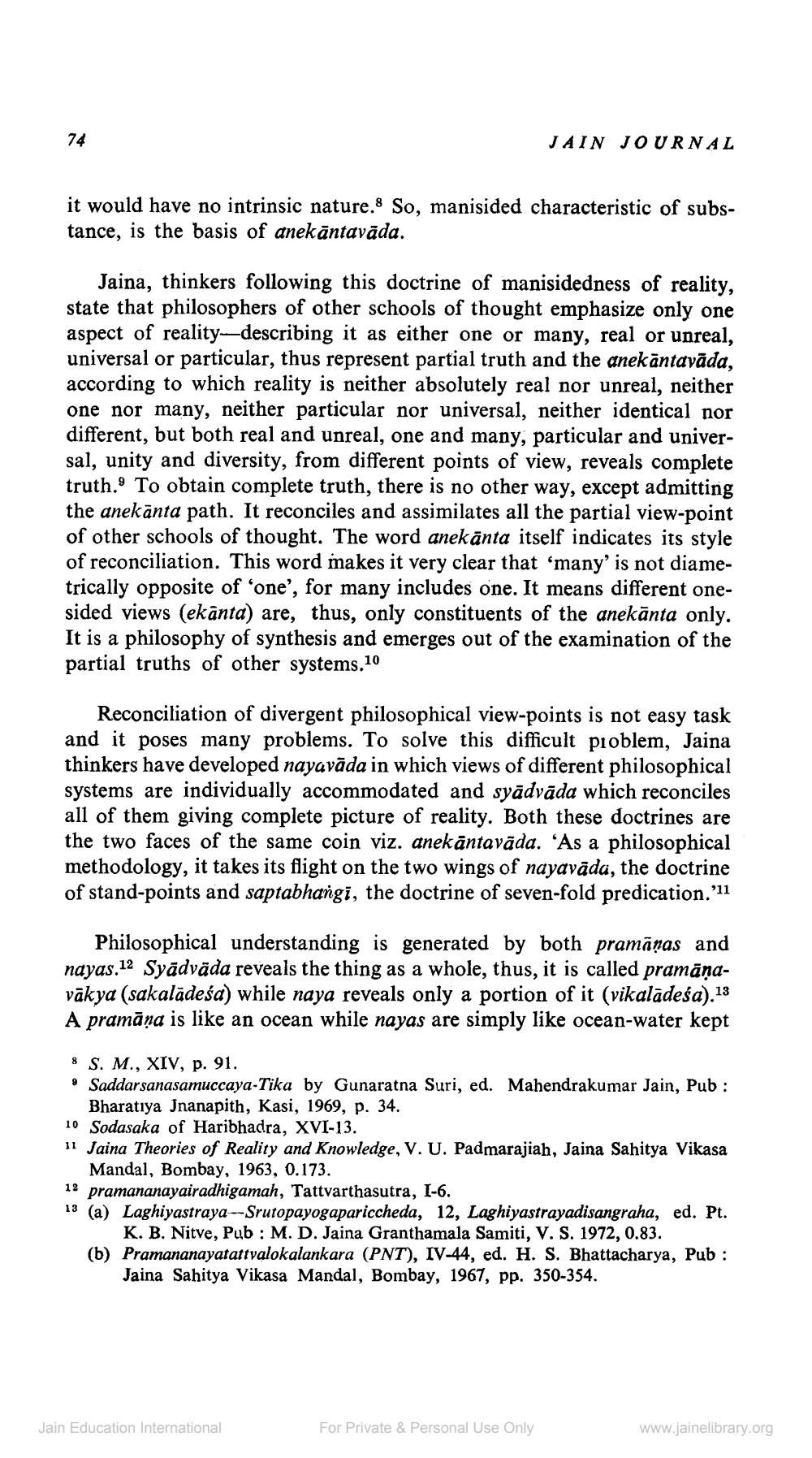________________
74
it would have no intrinsic nature. So, manisided characteristic of substance, is the basis of anekāntavāda.
JAIN JOURNAL
Jaina, thinkers following this doctrine of manisidedness of reality, state that philosophers of other schools of thought emphasize only one aspect of reality-describing it as either one or many, real or unreal, universal or particular, thus represent partial truth and the anekāntavāda, according to which reality is neither absolutely real nor unreal, neither one nor many, neither particular nor universal, neither identical nor different, but both real and unreal, one and many, particular and universal, unity and diversity, from different points of view, reveals complete truth. To obtain complete truth, there is no other way, except admitting the anekanta path. It reconciles and assimilates all the partial view-point of other schools of thought. The word anekānta itself indicates its style of reconciliation. This word makes it very clear that 'many' is not diametrically opposite of 'one', for many includes one. It means different onesided views (ekānta) are, thus, only constituents of the anekānta only. It is a philosophy of synthesis and emerges out of the examination of the partial truths of other systems.10
Reconciliation of divergent philosophical view-points is not easy task and it poses many problems. To solve this difficult problem, Jaina thinkers have developed nayavada in which views of different philosophical systems are individually accommodated and syādvāda which reconciles all of them giving complete picture of reality. Both these doctrines are the two faces of the same coin viz. anekantaväda. 'As a philosophical methodology, it takes its flight on the two wings of nayavāda, the doctrine of stand-points and saptabhangi, the doctrine of seven-fold predication.'11
Philosophical understanding is generated by both pramāņas and nayas.12 Syādvāda reveals the thing as a whole, thus, it is called pramāṇavākya (sakalādeśa) while naya reveals only a portion of it (vikalādeśa).13 A pramāņa is like an ocean while nayas are simply like ocean-water kept
8 S. M., XIV, p. 91.
• Saddarsanasamuccaya-Tika by Gunaratna Suri, ed. Mahendrakumar Jain, Pub: Bharatiya Jnanapith, Kasi, 1969, p. 34.
10 Sodasaka of Haribhadra, XVI-13.
11 Jaina Theories of Reality and Knowledge, V. U. Padmarajiah, Jaina Sahitya Vikasa Mandal, Bombay, 1963, 0.173.
12 pramananayairadhigamah, Tattvarthasutra, I-6.
13 (a) Laghiyastraya-Srutopayogapariccheda, 12, Laghiyastrayadisangraha, ed. Pt. K. B. Nitve, Pub: M. D. Jaina Granthamala Samiti, V. S. 1972, 0.83. (b) Pramananayatattvalokalankara (PNT), IV-44, ed. H. S. Bhattacharya, Pub: Jaina Sahitya Vikasa Mandal, Bombay, 1967, pp. 350-354.
Jain Education International
For Private & Personal Use Only
www.jainelibrary.org




